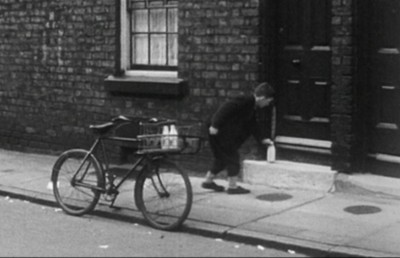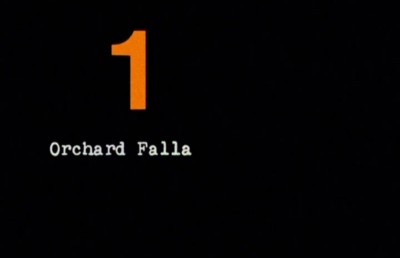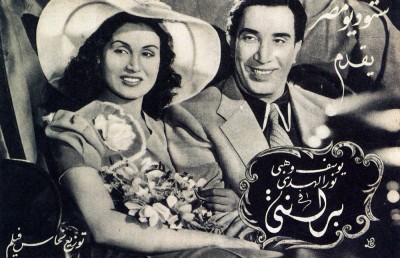Third Cinema Today

This article tries to address established notions of ‘Third Cinema’ theory and its film-makers from developing and postcolonial nations. The ‘Third Cinema’ movement called for a politicised film-making practice in Africa, Asia and Latin America, since its first appearance during the 1960s and 1970s, taking on board issues of race, class, religion, and national integrity. The films investigated, from directors such as Sembene, Getino, Solanas and Guzman, are amongst the most culturally significant and politically sophisticated from this movement, and denote the adoption of an independent, often oppositional stance towards commercial genre emanating from the more developed capitalist world. However, despite the contemporary popularity and critical attention enjoyed by films from Asia and Latin America in particular, Third Cinema appears to have lost its momentum. This article wants to bring Third Cinema back to attention. There are difficult and challenging questions Third Cinema posed and continues to pose, and this article seeks to suggest new methodologies and redirections of existing ones, but also reread the entire phenomenon of film-making in a fast-vanishing ‘Third World,’ with case studies of the cinemas of Argentina, Chile, Senegal as well as from European Third Cinema movements.
OverviewThere is an endless debate about Third Cinema and its strategies in offering valuables tools of documenting social reality. From the 1970s to recent days, appreciation of its value and aesthetics has unfolded through controversial approaches and different views on this ‘radical’ form of cinema. The idea of Third Cinema was raised in the 1960s as a set of radical manifestos and low-budget experimental movies by a group of Latin American filmmakers, who defined a cinema in opposition to Hollywood and European models. This new form of expression was coming largely from three different areas of the world: Asia, Africa and Latin America. At that time these three zones were labelled ‘Third World’ (and in some places they sometimes still are). Even though scholars such as Paul Willemen explained how the notion of Third Cinema was most emphatically not Third World Cinema, these two concepts have often been confused either voluntarily or accidentally.
As an idea, the roots of Third Cinema came from the Cuban Revolution (1959) and the figure who supported this revolution – Che Guevara. Also, the Brazilian “Cinema Novo,” where Glauber Rocha provided an uproar with his polemical manifesto entitled The Aesthetics of Hunger (July 1965), was an important element of this new wave. Some roots of Third Cinema also grew out of Italian neo-realism and John Grierson’s notion of social documentary, and were ultimately influenced by elements of Marxist aesthetics. Filmmakers influenced by Latin American documentary include Fernando Birri, Tomas Gutierrez Alea, and Julio Garcia Espinosa.
The term Third Cinema was invented by the Argentinean film-makers, Fernando Solanas and Octavio Getino who had produced and directed the most important Third Cinema documentary of the 1960s La Hora de los Hornos (The Hour of Furnaces, 1968). Contemporaneously they wrote an important essay sustaining the radical ideas of Third Cinema: “Towards a Third Cinema.” During the time of the release of La Hora de los Hornos a tri-continental revolution was supported by figures such as Frantz Fanon, Ernesto Che Guevara and Ho Chi Minh.
The principle characteristics of Third Cinema do not really reflect the country of origin, or the film-maker, but the ideology espoused and the consciousness displayed. Although a simplification, we may not be far from the truth if we claim Third Cinema as the cinema of the Third World, which stands in opposition to imperialism and class oppression in all its ramifications and manifestations.
The Third Cinema has offered a significant means of documenting social reality through the analysis of documentaries from Argentina, Chile and Algeria and, on the other side of the Ocean, from Black Independents documentaries made from a British context.
Self-conscious ideological opposition to Hollywood was the first marker of Third Cinema, while identification with national liberation was the next most common theme, at least in the early writings on the subject. The idea of the nation in this discourse, however, always rubbed up against globalized Third World identification. On the one hand, the tri-continental definition of radical film aesthetics defies national boundaries. On the other hand, if any cinema is determinedly ‘national’ even ‘regional’ in its address and aspirations, it is Third Cinema.
The political-cultural trends of the 1980s and 1990s have demonstrated the need for a definitive reappraisal of the terms in which a radical practice like Third Cinema had been conceived in the 1970s: questions of gender and of cultural identity received new inflections, and traditional notions of class determined identity were seen as inadequate as the forms of struggle that corresponded to them.
La Hora de los Hornos, The Battle of Chile, Salvador AllendeThe importance of Solanas and Getino’s works is due to both their manifesto on Third Cinema and the striking documentary of 1968, La Hora de los Hornos. This documentary’s importance within revolutionary cinema comes from the way it encourages its audience to take subversive action against imperialist politics through the dynamism of its style and the radical and systematic way that it frames political and ideological issues. Several authors have labelled this cinema as ‘Guerrilla cinema’ or ‘cinema like a gun’ because of the force of their images and of the violence with which the film-makers addressed the social and political issues of Latin America. The montage of La Hora de los Hornos is divided into thirteen chapters and three sections. Each chapter is supported by statements, quotations and slogans. At that time La Hora de los Hornos tried to unfold episodes and characters that, as stated by Teshome H . Gabriel, aimed to “raise the consciousness of its audience.”
La Hora de los Hornos represents a multi layered form of documentary. As a documentary film it is a combination of two or more modes of facing social reality. According to Bill Nichols, documentary modes can range within four categories: expository, observational, interactive and reflexive. Even though lacking in impartiality and so consequently not in the observational mode, Solanas and Getino’s work defiantly encompasses expository, interactive and reflexive modes of documentary.
As noted above, La Hora de los Hornos is divided into three sections: the first, ‘Neo-colonialism and Violence,’ relates Argentina to its European influences; the second section, ‘An Act for Liberation,’ explains the opposition struggle during Peron’s exile; in the third section, ‘Violence and Liberation,’ the audience alternately appreciate documents, interviews and quotations framing the path to a revolutionary future for the people of Latin America.
The use of direct address spoken and written commentary in which the spectator is called to act against imperialism is just one example of ‘Guerrilla Cinema’ form. From an editing point of view, recorded noise and distorted music plays a discursive and demystifying role in explaining the purposes behind this way of filming.
The Third Cinema was trying to develop a new web of production and distribution away from the mainstream channels. La Hora de los Hornos worked toward this goal by finding a way to circumvent censorship with the creation of an underground system of distribution. Sometimes these screenings (such as those featuring the films of Solanas and Getino) had to be protected by militant armed guards to avoid the risk of government retaliation. Enhanced by this concept of specific national roots that comes from African, Asian and Latin American Third Cinema, La Hora de los Hornos has mirrored the pursuit in avoiding the industrial-political domination of Hollywood.
Since its release La Hora de los Hornos has an unchanged value because of its attempt to frame an ideological-political argument. Indeed, the politics used by US strategies as described by the documentary of the two Argentinean filmmakers is not that different from the strategies raised by the US administration of the last few years of post-colonialism and the savage wars under George W. Bush’s rein. Without losing its force or relevancy, La Hora de los Hornos could be easily screened today as a denouncement of the crisis that affected Argentina in 2000, due to economical struggles provoked by IMF and its ‘bizarre’ financial strategies.
Solanas and Getino contributed greatly in building one of the most important pillars and reason of debate within Third Cinema, including such notions as national culture and identity. La Hora de los Hornos is probably the most influential documentary ever released in Latin America, not only useful as a device to understand the culture and political discourses of the late 1960s, but because it is still meaningful in deciphering the actual social problems in the Latin America continent.
In the manifesto “Towards a Third Cinema,” Solanas and Getino stated the goals they intended to achieve through Third Cinema: “The anti-imperialist struggle of the peoples of the Third World and of their equivalents inside the imperialist countries constitutes today the axis of the world revolution. Third cinema is, in our opinion, the cinema that recognises in that struggle the most gigantic cultural, scientific, and artistic manifestation of our time, the great possibility of constructing a liberated personality with each person as the starting point –in a word, the decolonisation of culture.”
Many years later (2004) in Latin America another important documentary was released by Patricio Guzman –Salvador Allende, a documentary which tells us about the life and death of the socialist president of Chile, who in 1973 was killed or forced into suicide [1] by both Pinochet and CIA in a coup d’etat. As Guzman did in 1977 with The Battle of Chile, a three-part documentary about Chilean socio-political life in the early 1970’s, Salvador Allende has a particular mode of production that creates an epic work poised between direct and dramatized, immediate and mediated modes of describing historical and dramatical events. Through the use of a voice-over both films mark the differences between these features and those concepts of direct cinema. Although the sequence shots and the mobile framing, reframing, focus shifts, and movements within the image could code the film as “direct,” the voice-over reinscribes the filmic discourse as an authored discourse.
Third Cinema in Africa: past and presentIn a continent like Africa, due to the long-term difficult situation of the cinema industry, the first point on a filmmaker’s agenda is looking for funds, and this need shows how the Third Cinema’s struggle for survival is still harsh. In this section I will take into account the period in which Third Cinema was born in Africa, through such works by Ousmane Sembene as Ceddo, Emitai and Xala.
“When one creates one does not think of the world; one thinks of his own country. It is, after all, the African who will ultimately bring change to Africa.” (Sembene)
This quote embeds most of the philosophy with which Senegalese Ousmane Sembene realised and supported the project of Third Cinema in Africa. Sembene encountered constant interference from Senegal censorship, with his works often being delayed or forbidden. Sembene often portrayed Africa as a land peopled with oppositional groups, who fight for their independence and for their cultural identity. His work Ceddo (1977) represented one of the most important pieces of Third Cinema in Africa. The title itself –which in English is translated to ‘outsider’– was quite critical of the colonization process. This word aimed to portray African’s struggles in resisting conversion to Islam, and to a certain extent also Christianity. In Sembene’s words “The Ceddo is a lively mind or spirit, rich in the double meaning of words and knows the forbidden meanings. The Ceddo is innocent of sin and transgression. The Ceddo is jealous of his/her absolute liberty.”
Ceddo is set in a traditional African village during the period when North African Arabs were building Islamic colonies all over Africa. The village depicted in the film included three symbols of foreignism which invades African spirituality: a European trader, a Catholic priest and an Arab Muslim. The movie shows the desire of colonization of African culture by these three different icons, faced by the local ‘outsiders,’ among whom we find ‘Ceddo.’ The feature is dominated by icons which represent the opposing cultures that struggle to survive.
Ceddo is set in an unidentified Wolof Kingdom perhaps in the eighteenth or early nineteenth centuries; the film abstracts itself from absolute chronological precision in order to function as a depiction of the pre-twentieth century political and cultural forces that were the melting pot of the modern Senegalese nation. Two of the most important icons represented in Ceddo can be seen firstly in the Black African power versus foreign power and influence, and secondly in the religious divisions within the foreigners and within the Wolof. With regard to the first reference, the decision-making powers of the king and his aristocracy are at stake in the game being played by the characters prevesiously mentioned such as the European slave trader, the European Catholic priest, and the Arab imam. Most of the common people are Ceddo. They resist the imported influences in a traditional way, which is to kidnap a hostage, Princess Dior, against their demands to the king to restore their rights to be heard and their traditional freedom of choice. The imam’s goal is achieved late in the film, when he takes the position of king and puts his own disciples in positions of aristocratic power. The second icon-reference is placed at the beginning of the film, the Muslim import has already defeated the Christian import among the Wolof aristocracy led by the family of the king; however, the bulk of the population is Ceddo, and the most explicit narrative issue is whether or not the entire nation will accede to Islam. In the film, the Ceddo are the common people, who remain true to the traditional fetish religion against the increasingly successful convertion zeal of the Muslims. The recession of the traditional religion upsets the self-determining balance of indigenous African political structures, leading to a loss of institutional continuity.
For a long time African Third Cinema was also the ‘cinema of silence’ whereby the silence witnessed the African spirituality to be protected and filmed without any form of invasion. Even though the first part of Sembene’s career was characterised by this element of silence, as featured in Emitai, Ceddo lost this cinematic approach to African culture. The silence in Third Cinema produced in Africa and specifically by Sembene seems to have two levels of reading: firstly, tradition is instinctual and articulation is not necessary for active opposition to the external religions; secondly, the silence echoes the reverence for traditional culture which, in spite of attempts of imperialism, remains deeply bound to African identity.
Recently, a new form of Third Cinema coming from the African continent is that of video-film features. According to Ukadike, it is useful to underline how almost all the video-films showing Ghanaian and Nigerian contemporary life are painted with “ostentatious allure.” It seems the representation of African culture seen through naked breasts of village women has ended; instead today we see the high-profile upper class, especially businessmen and women.
Particularly the cinema of Nigeria, also universally known as Nollywood, is a nascent film industry in Africa, growing up within the last two decades to become the second largest film industry on the planet. Nigeria shares its place amongst the most prolific countries in the world for film production with India, which is the first in the World, and the U.S. The rise of affordable digital filming and editing technologies has stimulated the country’s video film industry. Typically producing each film in less than a fortnight, for $15,000 a time, the country’s high-speed, low-budget movie industry is one of Nigeria’s few success stories. Nigerian films are still sold mainly on videocassette, not in cinemas, and are so cheap and widely available that even the poor in rural areas can watch this new, and more closer to their own perspective, depiction of dreams and fears of contemporary Nigerian society.
Even though this new form of cinematic expression embraces a certain wealthy life style, at the same time these new video-films are filled by national heroes, local and famous songs, in an MTV style, and an iconography of identity that is not portrayed fairly either by mainstream Hollywood cinema or European cinema. Thus these new forms embrace Third Cinema strategies of analysis whereby images, sounds and music function as frames which channel the struggle against past and contemporary forms of post-colonialism.
The debate among African filmmakers nowadays seems to be about the uniqueness of their cinema also finding ways of differentiation from Euro-American cinematic expressions. The aim pursued today by most of Third Cinema African filmmakers lies in fighting against all the obstacles that are retarding the development of their continent, trying to find a common thread between post-colonialism, film and local identities.
Third Cinema within a European border: Black IndependentsThird Cinema includes an infinity of subjects and styles so this form of cinema can be practised anywhere, opening the way towards new formulations of Third Cinema also within Europe. From this point view and from the Diasporas’ element in it, we can analyse the importance of the Black Independents operating in the UK which helped to create a new notion of Third Cinema.
The importance of Third Cinema as a medium produced also within European boundaries is raised by the position of the Black Audio Film Collective formed in the 1980s within UK borders. Even with their struggles in finding a new form of expression under Thatcherism, Black Audio Film Collective assumed a fundamental role in the presence of Third Cinema in today’s reality of globalization. Thus to talk about Third Cinema as cinematic expression coming only from the areas of Latin America, Africa and Asia is to dismiss its powerful impact on the European borders of this cinematic reality. In the past few years black Diaspora has led to an expression of new groups of ethnicity all over Europe such as Paris, London, Madrid and it would be unfair to dismiss those realities as a potential expression of the same thematic and aesthetic issues raised in the past by the three previously mentioned National areas.
As recalled by Reece Auguiste, a spokesperson for the Black Audio Film Collective, Third Cinema in Britain needed to find its own distinctiveness and this group helped in this direction. Even though the filmmakers who represented Black Audio Film Collective are working now as individual artists rather than members of that group project, the importance of a new alternative visual grammar is fundamental to address the needs of this new Diasporas generation which deals with the same issues of demarginalization as their parents once did in their old lands.
It’s also by supporting groups of filmmakers such as those coming from Black Audio Film Collective’s experience that it will be possible to redefine the borders and the tools of Third Cinema in these years of migration, globalization and –in one word– Diaspora. The multiplicity of identities and histories needs to be displayed through subjects that are able to weave a dialogue between new technologies, class gender and a mix of languages.
Third Cinema as ‘third space’Third Cinema may relevantly result as the ‘third space’ which displaces the histories and needs that constitute it and sets up new structures of identity and political initiatives, which are inadequately understood through the current mainstream channels of production and distribution. Due to the changing multiracial and multicultural world reality, Third Cinema must reinvent itself in terms of gender, class and geographical identity and consequently in terms of narrative structure and aesthetics.
The challenge between those cosmopolitan images and the struggle of local identity continues to move film authors looking for new ways to co-produce Latin American, African and Asian cultural identities through collaborative practices that have as their ultimate aim not the removal of the local, but a meaningful relocation of it into the global community.
As happened also for Solanas, the Third Cinema needs to configure itself as authorial icons representing their respective national culture within the global market, without losing their status as oppositional figures to the mainstream cinema; and without losing the local identities either coming from the Third World area or from a European context.
These concerns to define a necessary and new form of Third Cinema must not leave behind the primary concerns in the production of ‘revolutionary films.’ The need for Third Cinema is undoubtedly a call for social and cultural transformation. Even though historical contexts and aesthetic responses may change, its mandate to face post-colonialism and to protect local identities still holds. Obviously the present aim of Third Cinema, ignoring geographical borders, is to continue in seeking its own place in a global context. Third cinema is not the cinema of the Third World but is the cinematic expression of the desire to express themselves and their identities, even though a general tendency of politics and culture is pushing towards a way of homologation and annulment.
Footnotes
1 There is still a lot of controversy on this point, although the latter seems the most accepted version.
Bibliography
Alberto E., Díaz López, M. 2006. The Cinema of Latin America. Wallflower Press, London.
Armes, Roy 1987. Third World Film Making and the West. University of California Press, Berkeley.
Barnard, Tim 1986. Argentine Cinema. Nightwood Editions, Toronto.
Burton, Julianne 1990. The Social Documentary in Latin America. University of Pittsburgh Press, Pittsburgh.
Downing, John D. H., 1987. Film and Politics in the Third World. Praeger, New York.
Gabriel, Teshome H. 1982. Third Cinema in Third World. UMI Research press, Michigan.
Guneratne A., Dissanayake W. 2003. Rethinking Third Cinema. Routledge, New York.
Karen, Alexander 2000. “Black British Cinema in the 90s: Going Going Gone” in Robert Murphy British Cinema of the 90s. BFI, London.
Loizos, Peter 1993. Innovation in ethnographic film. Manchester University Press, Manchester.
MacDonald K. Cousins M. 1996. Imagining Reality: The Faber Book of Documentary. Faber and Faber, London.
Martin, Michael T. 1995. Cinemas of the Black Diaspora: Diversity, Dependence, and Oppositionality. Wayne State University Press, Detroit.
Nichols, Bill 1991. Representing Reality. Indiana University Press, Bloomington.
Pines J. Willemen P. 1991. Questions of Third Cinema. BFI, London.
Rocha, Glauber 1995. “The Tricontinental Filmmaker: That Is Called the Dawn” in Johnson and Stam Brazilian Cinema, pp.76-80. Columbia University Press, New York.
Rosenthal, Alan 1988. New Challenges for Documentary. University of California Press, Los Angeles.
Renov, Michael 1993. Theorizing Documentary. Routledge, London.
Schnitzer, J&L. 1973. Cinema in Revolution – The Heroic Era of the Soviet Film. Secker & Warburg.
Stam, Robert, Toby Miller, 2000. Film and Theory: An Anthology. Blackwell Publishers, Oxford and Malden.
Swann, Paul 1989. The British Documentary Film Movement, 1926-1946. Cambridge University Press, Cambridge.
Ukadike, Nwachukwu Frank 1994. Black African Cinema. University of California Press, Los Angeles.
Wayne, Mike 2001. Political Films: The Dialectics of Third Cinema. Pluto Press, London.
Filmography
Los Olvidados (Mexico, 1950)
Ultramar Films
Producer: Óscar Dancigers, Sergio Kogan, Jaime A. Menasce
Director: Luis Buñuel
B/W, 85 mins.
Terra em transe (Brazil, 1967)
Mapa Filmes
Producer: Glauber Rocha
Director: Glauber Rocha
B/W, 106 mins.
La Hora de los Hornos (Argentina, 1968)
Grupo Cine Liberacion, Solanas Productions
Producer: Fernando Solanas, EdgardoTallero
Director: Fernando Solanas, Octavio Getino
B/W, 260 mins.
Barravento (Brazil, 1969)
Iglu Filmes
Producer: Rex Schindler
Director: Glauber Rocha
B/W, 78 mins.
Emitai (Senegal, 1971)
Filmi Domirev
Producer: Ousmane Sembene
Director: Ousmane Sembene
Colour, 103 mins.
Xala (Senegal, 1974)
Films Domireew, Ste. Me. Production du Senegal
Producer: Paulin Vieyra
Director: Ousmane Sembene
Colour, 123 mins.
The Battle of Chile (Chile, 1977)
Equipe Tercer Ano Instituto Cubano de Arte e Industrias Cinematográficos
(ICAIC)
Producer: Chris Marker
Director: Patricio Guzman
B/W, 300 mins.
Ceddo (Senegal, 1977)
Films Domireew, Sembene
Producer: Ousmane Sembene
Director: Ousmane Sembene
Colour, 120 mins.
Handsworth Songs (UK, 1986)
Black Audio Film Collective
Producer: Lina Gopaul
Director: John Akomfrah
B/W, 61 mins.
Salvador Allende (Chile, 2004)
JBA Productions, Les Films de la Passerelle (co-production), CV Films (co-production), Mediapro (co-production), Universidad de Guadalajara (co-production), Patricio Guzmán Producciones S.L. (co-production), Centre National de la Cinématographie (CNC) (participation), Canal+ (participation), Westdeutscher Rundfunk (WDR) (participation), arte (participation), Yleisradio (YLE)
Producer: Jacques Bidou
Director: Patricio Guzman
B/W, Colour 100 mins.













